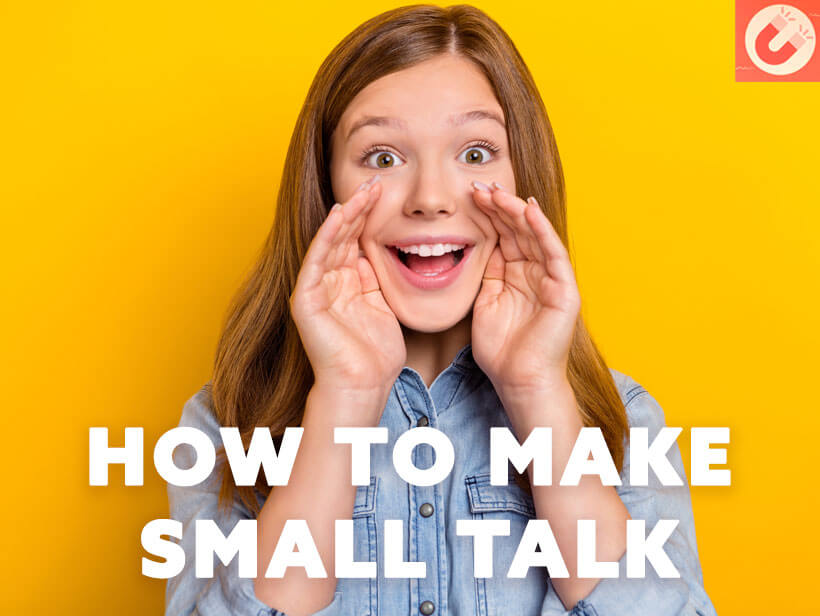Flirting is a social skill that takes practice, patience, and a lot of self awareness. The way we build rapport with new people and the flirting styles we engage in can reveal a lot about our personality and approach to relationships.
By mastering the nuances of each flirting style, individuals can develop a more strategic approach using the types of flirting that align with their personality and desired outcomes.
Whether you’re a seasoned pro who already knows how to flirt over text and in person, or if you are just starting out, understanding the various types of flirting can help you navigate the dating world with more confidence and success.
In this article, we explore the different types of flirting and how they can impact one’s success when asking someone out on a date.
So let’s dive in and explore the world of flirting styles!
What Is Flirty Behavior?
Flirty behavior shows playful, romantic, or sexual interest in someone you are attracted to. It often involves using verbal and nonverbal cues, such as body language, witty humor, and physical touch to create a positive and enjoyable interaction with the other person. Flirting can also be a way of testing the waters and gauging the other person’s interest.
By flirting with someone, you can get a sense of whether they are open to a more romantic or sexual relationship, and whether you have a mutual connection.
As a dating expert and social skills coach, I encourage my clients to embrace their natural flirting style and use it as a way to create positive and meaningful relationships with others.
What Are Different Types Of Flirting?
There are many different flirting styles that can all be performed in various ways, each with distinct aspects and intention. By understanding these different types, you can choose the flirting style that works best for you and use it to express your interest in others in a respectful and effective way.
Here are some of the most common types of flirting:
Physical Flirting
This type of flirting involves using body language and touch to convey interest. Examples include making eye contact, touching the person’s arm or hand, standing close to them, or playful teasing. Physical flirting can be a powerful way to express attraction, but it’s important to ensure that it’s consensual and respectful.
Sincere Flirting
Sincere flirting involves expressing genuine interest in the other person and getting to know them better. It may involve asking questions, listening attentively, and showing empathy. Sincere flirting can help to build a deeper connection between two people and can lead to a more meaningful relationship.
Playful Flirting
Playful flirting involves teasing and bantering with the other person in a lighthearted and fun way. It may involve making jokes or puns, using sarcasm, or engaging in witty banter. Playful flirting can help to create a relaxed and enjoyable atmosphere and can be a good way to break the ice.
Traditional Flirting
Traditional flirting involves adhering to traditional gender roles and social norms. It may involve the man taking the lead and pursuing the woman, or the woman being coy and demure. Traditional flirting can be charming and romantic, but it can also be limiting and reinforcing of outdated gender stereotypes.
Polite Flirting
Polite flirting involves being courteous and respectful to the other person. It may involve complimenting them, showing interest in their hobbies and interests, or being polite and attentive. Polite flirting styles may help you be more approachable and is a good way to show interest without being too forward.
Witty Flirting
Witty flirting involves using clever and humorous remarks to impress and entertain the other person. It may involve making puns, using wordplay, or engaging in witty banter. Witty flirting can be a fun and engaging way to express attraction and lighten the mood.
Subtle Flirting
Subtle flirting involves conveying interest in a more understated and indirect way. It may involve using subtle cues such as prolonged eye contact, smiling, or mirroring the other person’s body language. Subtle flirting can be a good way to express interest without being too overt or pushy.
What Are Flirting Mistakes To Avoid?
The biggest mistake people make with flirting is not being respectful of the other person’s boundaries, feelings, and individuality. It’s important to be genuine, respectful, and attentive to the other person’s needs and desires, rather than focusing solely on your own interests or desires.
Here are some mistakes people make when using each flirting style:
Physical Flirting Mistakes
The biggest mistake people make with physical flirting is crossing the line into inappropriate or unwanted touching. It’s important to respect the other person’s boundaries and make sure that they are comfortable with any physical contact.
Sincere Flirting Mistakes
One common mistake with sincere flirting is coming on too strong or too fast. It’s important to take things slow and get to know the other person gradually, rather than overwhelming them with too much attention or interest.
Playful Flirting Mistakes
The biggest mistake people make with playful flirting is using humor that is hurtful or offensive. It’s important to make sure that the other person is comfortable with the jokes or teasing, and to avoid making jokes at their expense.
Traditional Flirting Mistakes
The biggest mistake people make with traditional flirting is adhering too strictly to gender roles and social norms. It’s important to be respectful of the other person’s individuality and to avoid making assumptions based on their gender.
Polite Flirting Mistakes
One common mistake with polite flirting is being too formal or stiff. It’s important to be genuine and show your personality, rather than trying to be too polite or perfect.
Witty Flirting Mistakes
The biggest mistake people make with witty flirting is trying too hard to be clever or funny. It’s important to let the humor flow naturally and not to force it.
Subtle Flirting Mistakes
The biggest mistake people make with subtle flirting is being too subtle or indirect. It’s important to give clear signals of your interest, rather than relying too much on subtle cues that may be missed or misinterpreted.
Which Flirting Style Is Best?
The best flirting type for a specific situation depends on several factors, such as the setting, the other person’s personality and preferences, and your own personality and goals.
Here are some tips on how to choose the best flirting style for a specific situation:
1. Consider The Setting
Different flirting styles may be more appropriate for different settings. For example, playful flirting may be more appropriate in a social or party setting, while sincere or polite flirting may be more appropriate in a professional or formal setting.
2. Pay Attention To The Other Person And Their Preferences
To choose the best flirting style, you need to understand the other person’s personality and preferences. For example, if the other person is more reserved or introverted, you may want to use a more subtle or sincere flirting style. On the other hand, if they are more outgoing or extroverted, you may want to use a more playful or witty flirting style.
3. Consider Your Own Personality And Goals
To choose the best flirting style, you also need to consider your own personality and goals. For example, if you are naturally more outgoing and confident, you may want to use a more bold or physical flirting style. However, if you are more reserved or shy, you may want to use a more subtle or polite flirting style.
4. Read The Other Person’s Cues
To choose the best flirting style, you need to pay attention to the other person’s social cues and adjust your approach accordingly. If they seem uncomfortable or disinterested, you may need to tone down your flirting style or switch to a more sincere or subtle approach.
5. Reflect On Your Previous Interactions
Your previous interactions with the other person can also provide clues about which flirting style to use. If they have responded positively to your previous flirting attempts, you may want to continue with a similar style. If they have seemed uncomfortable or disinterested, you may want to adjust your approach or try a different style.
How To Improve Flirting Skills
Improving your flirting skills can help you to feel more confident and effective when expressing your interest in others.
Here are some tips on how to improve your flirting skills:
1. Work On Your Confidence
Confidence is key when it comes to flirting. You can boost your confidence by working on your self-esteem, practicing positive self-talk, and taking care of yourself physically and emotionally.
2. Practice Active Listening
One of the most important skills in flirting is active listening. This means paying close attention to the other person, asking questions, and showing interest in what they have to say. This can help you to build a deeper connection with the other person and avoid coming across as too aggressive or creepy.
3. Use Appropriate Body Language
Body language can convey a lot of information about your intentions and feelings. Make sure to use open and inviting body language, such as maintaining eye contact, smiling, and leaning in towards the other person. Avoid crossing your arms or legs, as this can make you seem closed off or defensive.
4. Be Respectful Of Boundaries
Respect is key when it comes to flirting. Make sure to respect the other person’s boundaries and avoid being too pushy or aggressive. If they seem uncomfortable or disinterested, back off and give them space.
5. Use Humor In Moderation
Humor can be a great way to break the ice, but it’s important to use it in moderation. Avoid using humor that is hurtful or offensive, and don’t rely too much on humor to cover up your insecurities.
6. Practice, Practice, Practice
Flirting is a skill that takes practice to master. Try flirting with friends or acquaintances in low-pressure social situations, such as at a party or social event. Practicing when the stakes are low will help you become more comfortable with expressing your interest in others and fine-tune your flirting skills.
7. Hire A Social Skills Coach
Hiring a social skills coach can also be a valuable way to improve your flirting skills. A coach can provide you with personalized feedback and guidance on your approach, help you identify areas for improvement, and provide you with strategies and techniques to enhance your flirting skills.
What’s Your Type (Of Flirting)?
Improving your flirting skills requires a combination of self-awareness and practice. By working on your confidence, active listening, appropriate body language, respect for boundaries, and use of humor, you can become a more effective and confident flirt.
To choose the best flirting style for a particular situation, it is essential to consider the setting, the other person’s personality and preferences, your own personality and goals, and the other person’s cues.
Different situations may call for different flirting styles, such as physical flirting, which involves using touch to express interest, or sincere flirting, which focuses on building a deeper emotional connection.
Playful flirting uses humor and banter to create a lighthearted and fun atmosphere, while traditional flirting may involve adhering to gender roles and social norms. Polite flirting is respectful and courteous, while witty flirting showcases cleverness and intelligence. Subtle flirting relies on more indirect cues to express interest and attraction.
By being mindful and flexible in your approach, you can find the right flirting style to create positive and enjoyable interactions with others. Ultimately, honing your flirting skills and adapting your style can help you build stronger connections and foster more meaningful relationships.



